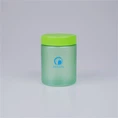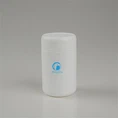A pharmaceutical container is any packaging system specifically designed to store and protect medicines, ensuring they remain safe, stable, and effective until use. These containers play a critical role in the pharmaceutical supply chain, as they directly affect drug safety, shelf life, and patient compliance.
Main Purpose
The primary functions of a pharmaceutical container are:
Protection – Prevent contamination, moisture, light, and oxygen exposure that can degrade the product.
Dosage Control – Allow accurate measurement and dispensing.
Tamper Evidence – Provide a clear indication if the package has been opened or altered.
Compliance – Make medication easy to store, transport, and consume as directed.
Common Types of Pharmaceutical Containers
Pharmaceutical containers can be classified based on material, form, and intended use:
Plastic Bottles – Made from HDPE, PET, or PP, often used for tablets, capsules, and syrups.
Glass Bottles and Vials – Suitable for injectable drugs and light-sensitive liquids.
Blister Packs – Common for tablets and capsules, offering unit-dose packaging.
Sachets and Pouches – Used for powders or single-use liquids.
Tubes and Ampoules – Designed for creams, gels, or injectables.
Material Considerations
Choosing the right material is essential to avoid chemical interaction with the medicine. Common materials include:
HDPE – High resistance to moisture and chemicals, widely used for solid dosage forms.
PET – Clear, lightweight, and strong, ideal for liquid formulations.
Glass – Inert and impermeable, preferred for injectables and sensitive compounds.
















